The XPG Core Reactor II VE 850W PSU Review: Our First ATX 3.1 Power Supply
by E. Fylladitakis on May 2, 2024 10:00 AM EST- Posted in
- Cases/Cooling/PSUs
- PSUs
- 80Plus Gold
- XPG
- ATX v3.1
Hot Test Results (~45°C Ambient Temperature)
During its hot testing phase, the XPG Core Reactor II VE 850W PSU exhibits a marked decrease in efficiency under heavy loads, with figures dropping to 88.9% under a 115 VAC input and 89.7% with a 230 VAC source, compared to 90.9% and 91.7%, respectively, during cold testing. This significant decline is accentuated at higher load levels and is accompanied by signs of significant thermal stress. Although this PSU is rated for operation at an ambient temperature of up to 40°C, the effect that higher ambient temperatures had on its performance are rather severe.
In hot testing conditions, the fan of the XPG Core Reactor II VE 850W PSU operates continuously, at higher speeds than with a low ambient temperature and further increasing its speed as the load surpasses 400 Watts. It also nears its maximum speed as it approaches 80% capacity. This operational characteristic keeps the PSU relatively tolerable up to 60-65% load. However, beyond that point, the noise level rises significantly, making the unit audibly noticeable.
With its 120 mm fan, the XPG Core Reactor II VE 850W PSU effectively handles cooling, but temperatures do become uncomfortably high when the load exceeds 75%. Despite this increase, the temperatures remain below the threshold necessary to trigger the over-temperature protection (OTP). The designer seems to have made a major effort in balancing acoustics and thermal performance/reliability.


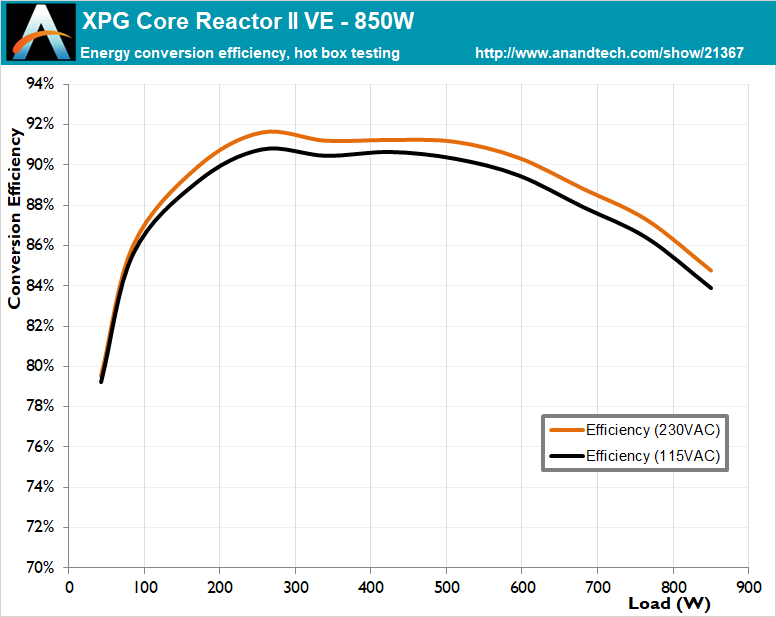
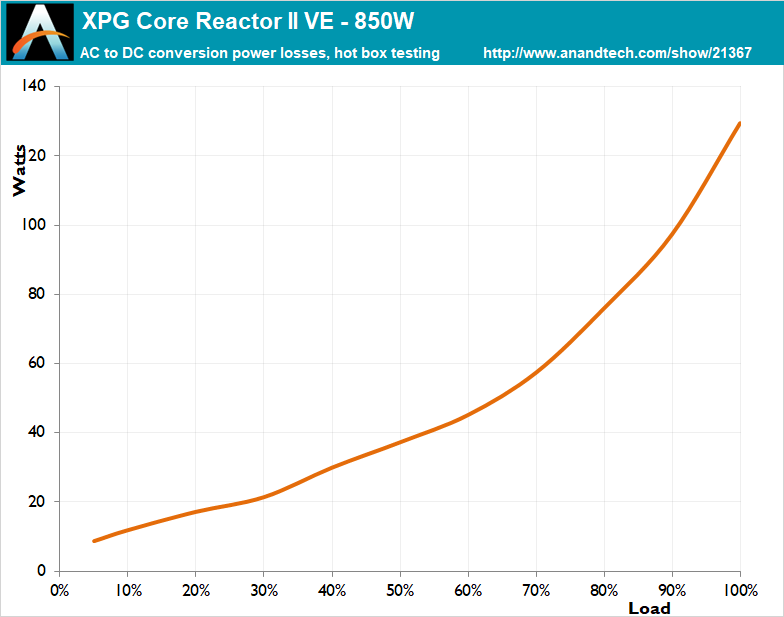
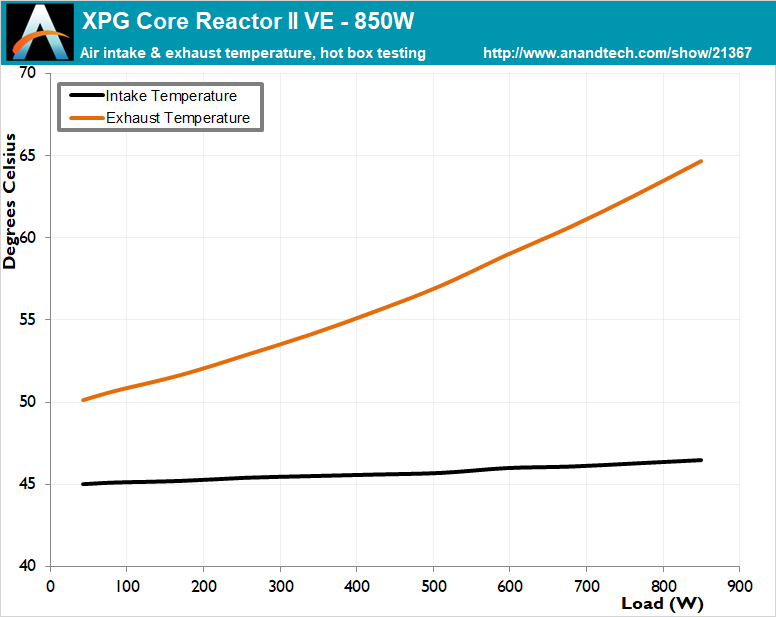
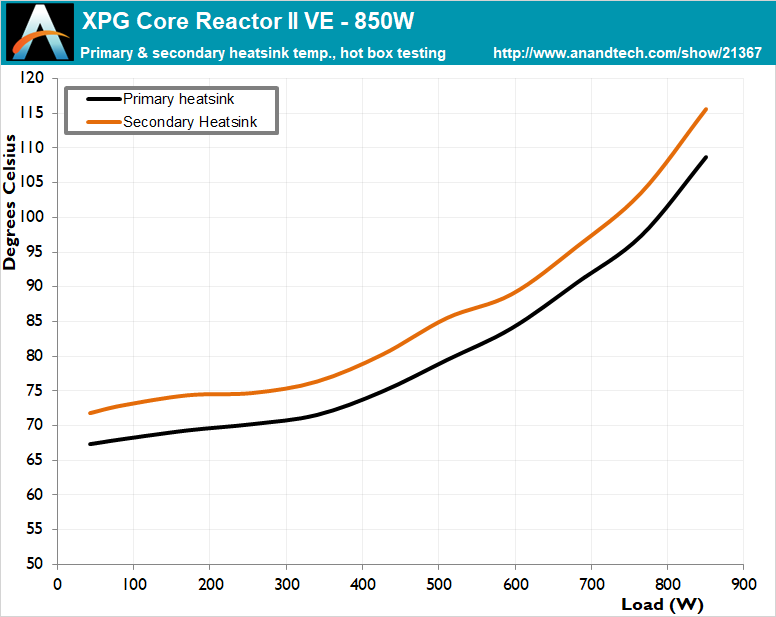
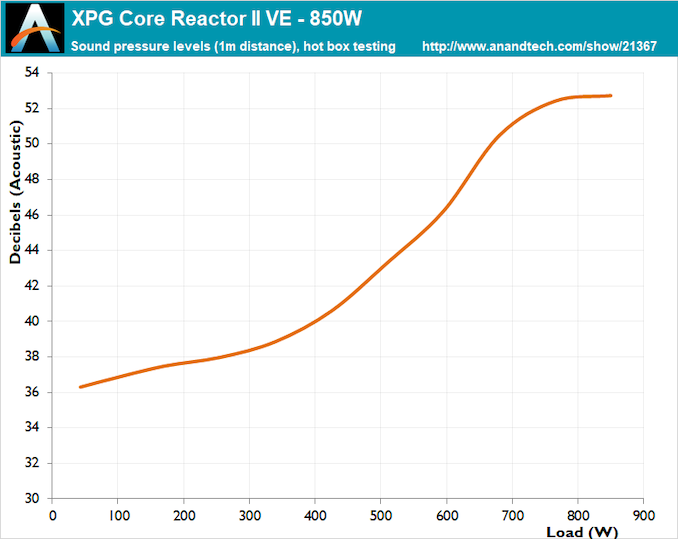








31 Comments
View All Comments
Dante Verizon - Thursday, May 2, 2024 - link
These tests confirm what I always say: buy a PSU with 20% more power than recommended for your system.You'll have a safety margin, the PSU will work cooler, quieter and should even last longer Reply
haukionkannel - Thursday, May 2, 2024 - link
So this is the first psu with somewhat fixed 12 pin power connectors. What gpus have now? These new connectors aka do we see improved safety from now on…. ReplyRyan Smith - Thursday, May 2, 2024 - link
GPUs have already started using the revised connector. PSUs take a bit longer to spin up, both because they don't sell through as quickly, and because there are material changes to power delivery in ATX 3.1 that had to be accounted for. ReplySamus - Tuesday, May 7, 2024 - link
Are these HP12V connectors backwards compatible with one another between cards, cables and PSU's? Replyflgt - Thursday, May 2, 2024 - link
I’m know it’s tough with all the legacy hardware, but they really need to go the 48 VDC at this point if they are writing new specs. ReplyRailgun - Thursday, May 2, 2024 - link
What? Replyzodiacfml - Friday, May 3, 2024 - link
I like 48V but that would require change across the industry, like datacenters and more. Tesla is likely to go this route, they already announced a revolutionary datacenter years ago for efficiency. Replymeacupla - Friday, May 3, 2024 - link
The thing is though, 48V isn't all that efficient due to CPU/GPU/DRAM etc. all wanting 1.1~1.5V.The larger the step is, the less efficient the conversion becomes.
Laptops have this all figured out already, and 19.5~20V has the best power efficiency.
USB-C PD allows up to 240W (48V, 5A), but no one has bothered to implement this on either end.
There are no laptops with 240W USB-C input, and no chargers that do 48V, 5A output. The only 240W PD parts out are cables.
The reason being the above mentioned efficiency loss when stepping down the input voltage. Reply
Scabies - Friday, May 3, 2024 - link
Framework 16 allows 240W charging. Admittedly, their best GaN adapter tops out at 180W. Replyzodiacfml - Saturday, May 4, 2024 - link
I think conversion losses is even or same for specific target chip voltages. Actually, many modern PSU designs steps up voltages from the power outlet to insane numbers so that losses and AC transformer size required is minizmied then step down the voltage through solid state components or DC converters. Reply